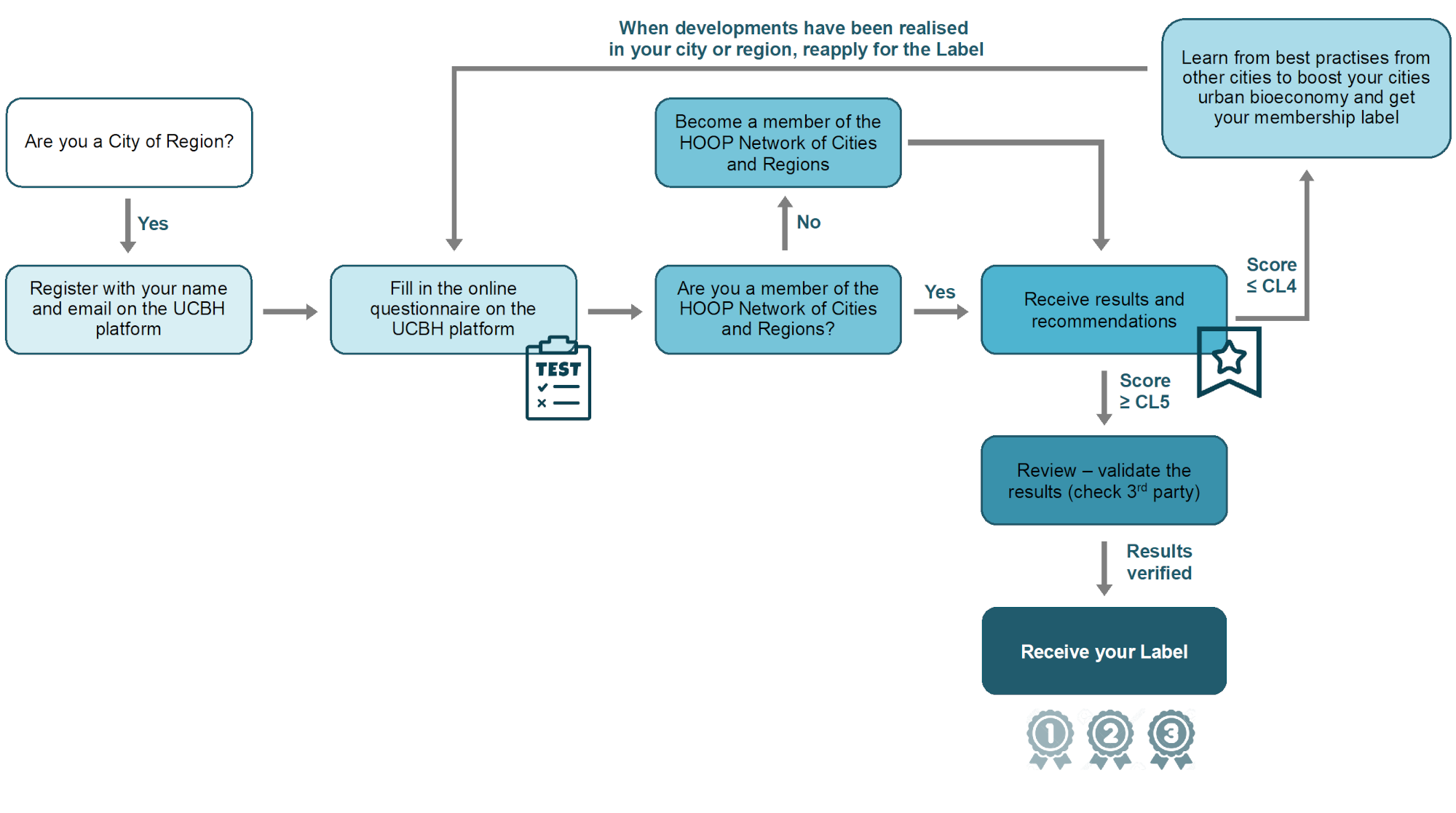Bio-circularity label
The HOOP Circularity Label tool is an instrument to understand the current
performance
of a city/region regarding the implementation of bio-circular measures
Calculate your bio-circularity labelIntroduction
The HOOP Bio-Circularity Label has the aim to play an important role in the mission to support cities and regions to boost their circular urban bioeconomy. The label has been developed to show to what extent cities and regions implement circular measures, policies, and initiatives. Thereby creating an environment to help encourage investments in circular technologies, projects, and companies, allowing the production and application of biowaste-based products.
Besides the status on the circular urban bioeconomy, the Label also detects areas cities can improve on in their local bioeconomy. Here cities and region can learn from real-life examples, aiming to stimulate the circular urban bioeconomy. So, the Label demonstrates the effectiveness of green policies.
The Label consists out of a list of indicators related to urban biobased waste streams including Organic Fraction Municipal Solid Waste (OFMSW) and Urban Waste Water Sludge (UWWS). The assessment covers the political ambitions, strategies and implemented policies, participation, awareness and initiatives of the society, consumption, and waste patterns as well as waste treatment. Cities and regions showing a high maturity in circular policies, programs, projects will be awarded with the HOOP Bio-Circularity Label.
The Circularity Levels
The HOOP Bio-Circularity Label is based on a scoring system. Here the cities and regions are assessed on their circularity performance based on nine Circularity Levels (CL). Each level indicates the level of maturity of the circular bioeconomy on a European level.
The higher the CL obtained, the better a city or region is performing. Where CL 5 is the European average. The distribution of the CL scoring and the Label can be seen in the image above.
Calculate your bio-circularity label
See the Circularity Label Map











